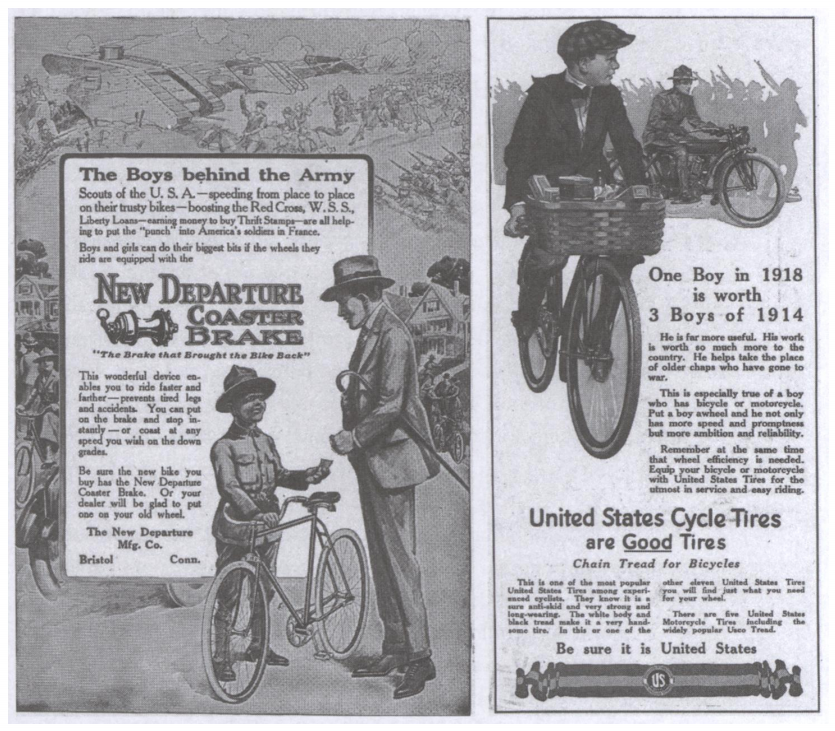It would be hard to find a find a product and a demographic more tightly tied together in our cultural imagination than boys and bikes. Robert J. Turpin writes that that association was born a century ago, when manufacturers’ need for customers lined up with changing ideas about youth and masculinity during World War I.
In the 1890s, soon after the first modern bicycles made it easy for anyone to ride, bicycling emerged as a means of transportation and recreation—for adults. In those years, Turpin writes, manufacturers did build kids’ bikes, but they weren’t a big marketing focus. The only ads for them were in catalogs.
But, as the adult “bicycle craze” faded, manufacturers turned to kids—boys in particular—as a new customer base. The idea of children as targets for advertising emerged in the years just before World War I. Magazines like American Boy began selling themselves to advertisers as a way to reach the child consumer they saw emerging.

Some ads promoted bicycles to both boys and girls as an avenue for exercise and good health. But many presented them as a specifically male childhood necessity.
Turpin writes that ads for boys’ bikes drew from, and fed into, a changing vision of boyhood and American nationalism. Like the Boy Scouts, the bicycle presented a way for boys to appreciate the beauty of the country, develop a sense of independence, and physically prepare for military service. In ads, boys roamed the countryside, catching frogs or fishing in ponds.
Some ads during World War I literally linked bicycles to national service. In one from the New Departure Coaster Brake Company, a Boy Scout on a bike sold Liberty Bonds in front of copy boasting about the Scouts’ use of bikes to support patriotic programs. An ad for the tire-maker U.S. Rubber Company proclaimed that the boy of 1918 “helps take the place of older chaps who have gone to war.”
Even after the war ended, bike ads remained focused on the transformation of boys into strong young men. On 1921 ad asked “does your boy… have the glorious chance to develop himself physically and mentally in the happy way a bicycle brings?”
Through the interwar years and beyond, the notion that boys must develop into strong, capable men, with increasing independence and mobility, remained connected with the bicycle.







